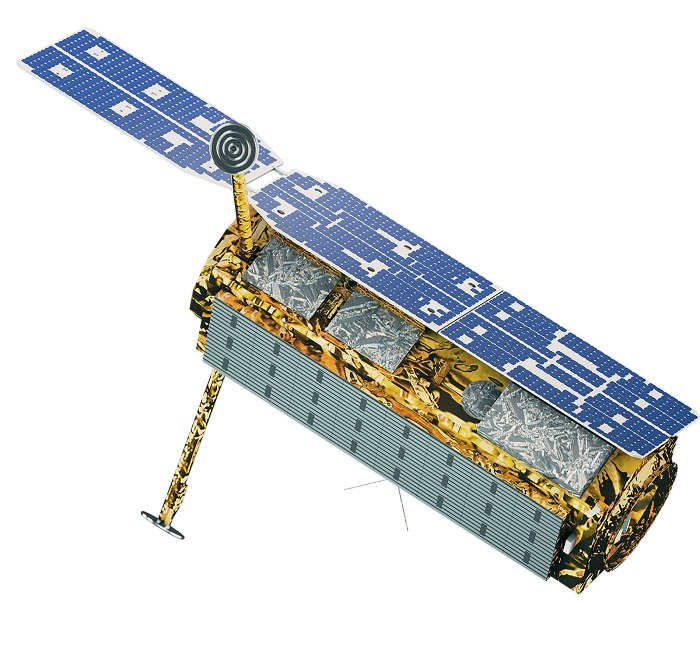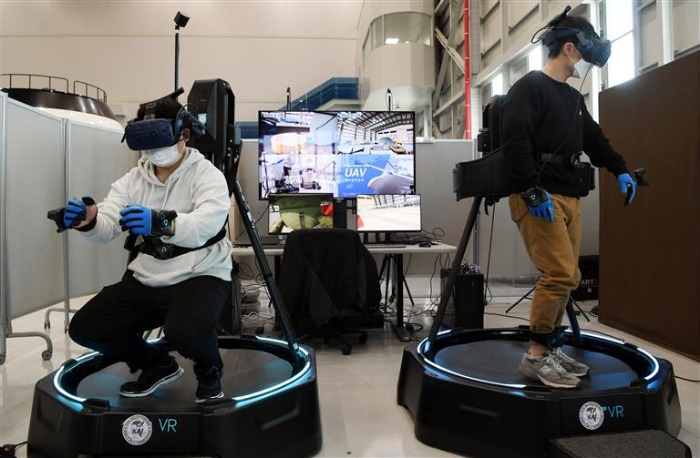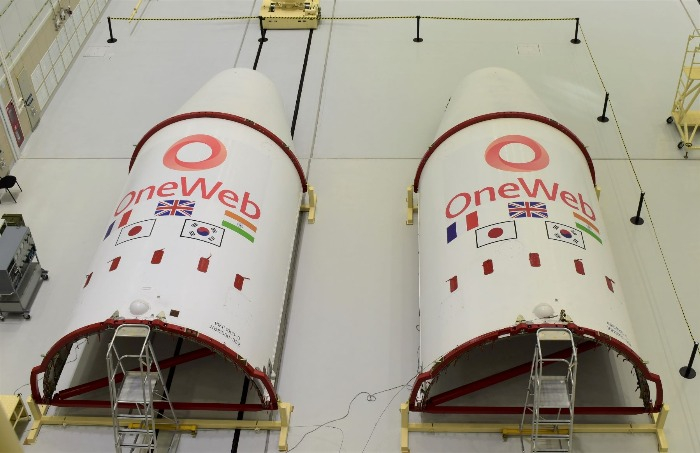Aerospace & Defense
Defense giants eager to bolster satellite business
LIG Nex1, KAI, and Hanwha Systems join forces with European partners to preoccupy next-generation satellites
By Feb 11, 2022 (Gmt+09:00)
4
Min read
Most Read
LG Chem to sell water filter business to Glenwood PE for $692 million


Kyobo Life poised to buy Japan’s SBI Group-owned savings bank


KT&G eyes overseas M&A after rejecting activist fund's offer


StockX in merger talks with Naver’s online reseller Kream


Mirae Asset to be named Korea Post’s core real estate fund operator



In the era of space privatization, satellites are the driving forces.
South Korea’s main defense systems makers are turning away from arms exports to focus all their attention on the next-generation satellite market.
LIG Nex1 Co. recently signed a partnership agreement with Thales Group on geostationary satellite manufacturing.
Thales Alenia, a Franco-Italian joint venture between Thales and Leonardo, announced on Jan. 31 that it has signed a contract with the LIG Group subsidiary to provide digital processors for the GEO-KOMPSAT 3 (Geostationary Earth Orbit Korea Multipurpose Satellite 3) communications satellite.
The multi-band communications satellite will provide broadband satellite communication services in South Korea, ensuring service continuity of the COMS 1 satellite, currently in in-orbit operations.
In particular, the new satellite will support the Korea Coast Guard's satellite communications; secure stable information on monitoring water disasters; and provide the Ministry of Science and ICT with a satellite communication system for an emergency response to disaster situations.
The Electronics and Telecommunications Research Institute (ETRI) of Korea is responsible for the satellite payloads, while the Korea Aerospace Research Institute (KARI) operates the satellite platform.
Initially, LIG Nex1 has signed an agreement with Airbus Defence and Space's German arm to collaborate in building Arirang 6 or KOMPSAT 6 (Korean Multi-purpose Satellite 6.)
The deal is not going as planned, however, due to the difficulty in securing parts to synthetic aperture radar (SAR,) an integral part of the planned sub-meter class SAR Satellite.
MULTIPURPOSE GEOSTATIONARY SATELLITE
Hit by the supply bottleneck, LIG Nex1 decided to bolster its efforts on developing a multipurpose geostationary satellite scheduled for launch in 2027.
As part of a development project for the Korean Positioning System (KPS,) LIG Nex1 also wants to develop its own satellite parts with homegrown technology.
The KPS development project boasts the largest investment amount ever in the country’s space development history with 3.7 trillion won ($3.1 billion) over the course of 14 years from 2022.
The Ministry of Science and ICT, The Korea Aerospace Research Institute, and LIG Nex1 will lead the project.
South Korea lacks its own satellite positioning system and relies solely on the GPS, operated and maintained by the US Department of Defense.
Am LIG Nex1 employee said, “The key components of a satellite will be developed with domestic technology and KPS will create more than 7 trillion won in economic value.”
LIG Nex1 was established in 1976 as Goldstar Precision. The LIG Group subsidiary makes missiles, torpedoes, and communication systems among others.

Korea Aerospace Industries Ltd. (KAI,) another defense and aerospace giant, also aims to develop satellites.
In July 2021, KAI and Elon Musk’s SpaceX agreed to collaborate on the launch of next generation mid-sized satellites.
The country’s sole aircraft maker announced on July 18 that it signed a deal with SpaceX for the latter’s projectile to carry the No. 4 satellite slated for 2025.
The Korea Aerospace Research Institute (KARI) is leading the project; with the goal of developing five 500-kg satellites using the country’s own technology.
KAI signed a business agreement with Airbus last October and formed a task force for the collaboration earlier this year.
The two companies will focus their collaborative efforts on the development of small low-orbit satellites. Faster than the bulkier counterparts, the smaller versions are mostly used in observing the Earth and surveillance patrol.
KAI was originally established as a joint venture of Samsung Aerospace, Daewoo Heavy Industries' aerospace division, and Hyundai Space and Aircraft Company (HYSA) in 1999. The company developed a number of satellites and was involved in the production of several foreign-designed aircraft via licensing agreements.

Hanwha Systems Co., for its part, has joined hands with British startup OneWeb to enter the space-based internet network market by utilizing small and low orbit satellites.
The aim is to send hundreds of satellites into space to build 5G networks.
Hanwha Systems is developing technology for satellite communication between satellites and stations based on Earth, with the aim of completing a prototype by the end of the year.
The common denominator among the three defense heavyweights is the emphasis on synergy effects.
Rather than simply launching a satellite into space, the companies hope to create a synergy effect with other sectors – in urban air mobility, for example.
US financial services firm Morgan Stanley estimates the global space industry to generate more than $1 trillion or more in revenue by 2040, up from the current $387 billion. The average annual growth rate is forecast to hover above 5%.
The number of satellites worldwide is also expected to increase from 8,018 last year to 20,000 by 2025. By 2030, the number is forecast to rise to 38,018.
Write to Jeong Min Nam at peux@hankyung.com
Jee Abbey Lee edited this article.
More to Read
-

-
 DefenseHanwha Defense to supply howitzers to Australia in $788 mn deal
DefenseHanwha Defense to supply howitzers to Australia in $788 mn dealDec 13, 2021 (Gmt+09:00)
2 Min read -
 [Exclusive] Aerospace & DefenseKorea closer to independent satellite technology
[Exclusive] Aerospace & DefenseKorea closer to independent satellite technologyNov 22, 2021 (Gmt+09:00)
4 Min read
Comment 0
LOG IN


